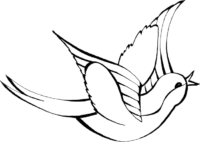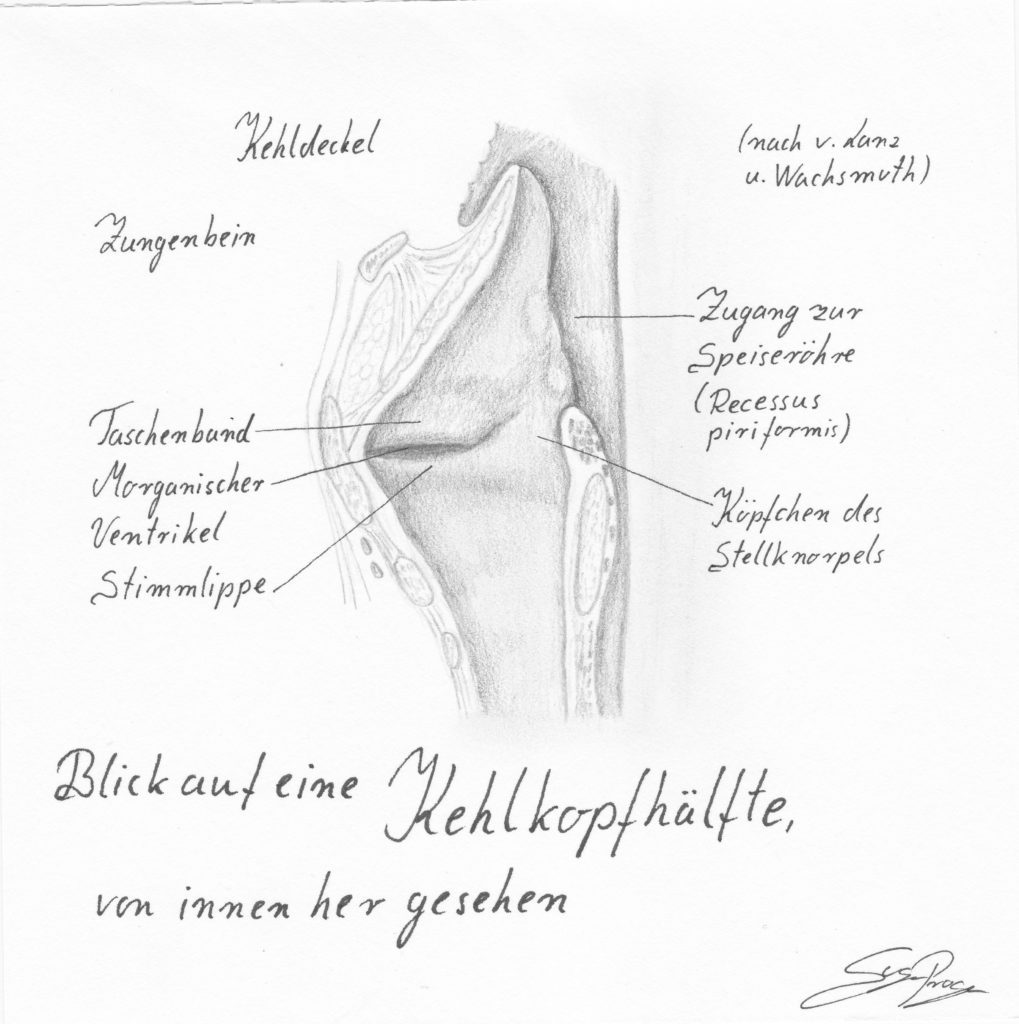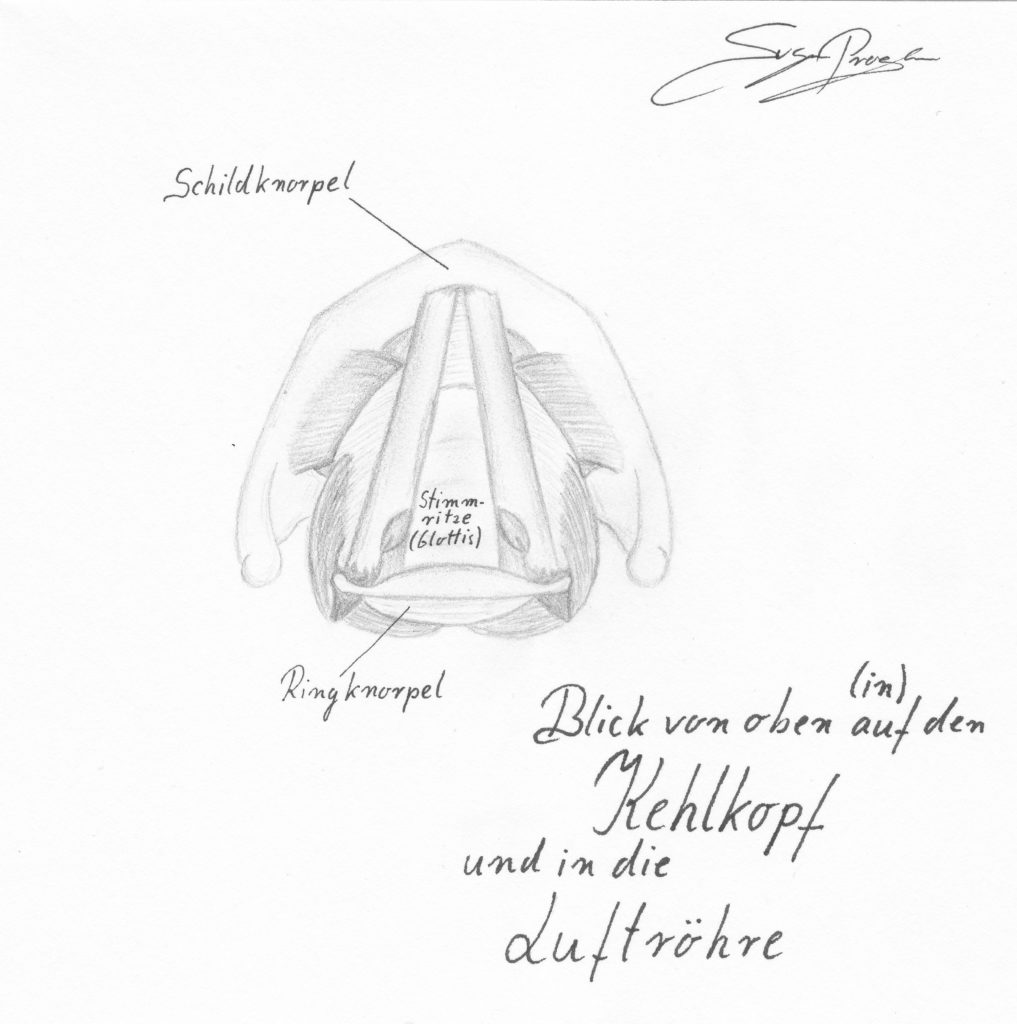

There is no voting organ in the true sense of the word. The voice is created by the interaction of several organ activities. However, the larynx represents the vocal organ in the figurative sense.
The connection between the trachea and the pharynx is formed by the larynx. He has four parts of cartilage:
• The cartilage is connected to the ring cartilage via a joint.
• The epiglottis, also called the epiglottis, closes the entrance to the larynx and is connected to the shield cartilage. This prevents food from getting into the windpipe.
• The shield cartilage (known as Adam’s apple in men) is the foremost wall.
• The ring cartilage lies horizontally under the shield cartilage.
In the middle of the larynx (inside) are the vocal chords, which you need for singing and speaking.
Closure of the airways is the main function of the larynx. This happens reflexively and is vital. Foreign bodies cannot penetrate the lungs in this way. Inside, the larynx is covered with a mucous membrane. Inhaled particles can be transported upwards by the permanent movement of cilia.
The plane in the larynx where the vocal folds close is called the glottis. Their primary task is to prevent food from entering the airways. A tight closure allows an increase in pressure, which enables us to expel foreign bodies or mucus through coughing.
Voice formation via the vocal chords is adjustable. They are stretched between the ring cartilage and the cartilage. When inhaled, they are open without tension. When exhaling, they are made to vibrate by the air current and are in tension. The stronger the voltage, the higher the tone.
The larynx is located below the hyoid bone in the middle region of the neck. When swallowing, it moves: it closes the windpipe and is pulled forward and upwards.
The larynx belongs to the respiratory tract: it consists of cartilage and is held by ligaments and moved by muscles.

Our vocal chords are elastic. The vocal folds consist of muscles (mainly the vocalis muscle). Their delicate edges, made of elastic fibres, are the vocal chords.
„sing expressively and from your heart“

Get your 100% FREE video tutorial:
You will receive your free video from me by e-mail. There will be more free exciting videos with valuable tips. By registering, you confirm that you have taken note of this important information on data protection, in particular Article 13 DSGVO.
Susanna Proskura
>>about me>>
Dipl. classical singer
Dipl. vocal pedagogue
Dipl. Concert Singing
Dipl. Art Song
(Munich Conservatory of Music)


When you sing, your vocal chords will close. Depending on the technology, this can look different. (squeezed, dumplings, free swinging etc.) If the vocal cords do not close well, the voice will sound breathy.
This is possible in case of a weakness of the transversus muscle or by deformation.
The number and extent of vocal fold oscillation determine the pitch.



Below I have made a self-explanatory drawing for you. Here you can see the embedding of the throat and the connection of the muscles. A good posture (back, neck) has a positive effect on the sound of the voice. Now you can see why the loose jaw is so important for singing!
The better trained a voice is, the smaller the laryngeal movement in general, especially when singing upwards, while the downward adjustment movement before singing can be considerable. Excellent singers, i.e. very well trained, sing ascending tone sequences mostly with a low vocal organ. The low position is frequent, but not always conscious.” (Nadoleczny)